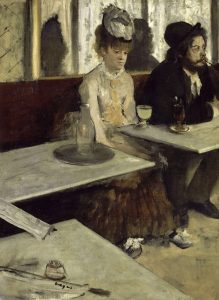You don’t have be a master craftsman to recognize high-quality work. If you had your class draw their own hands, or play the same piece of music on the piano, or build a coffee table, you’d immediately be able to decide who is good at it and who isn’t. Some wouldn’t even know where to begin. Others would produce something that only vaguely resembles the output you asked for. You’d probably be able to quite easily group their attempts into excellent, good, mediocre and bad ones; in fact, you’d probably be able to assign them grades: in a class 100 you could give As to the best 10, Bs to the next 25, Cs to the middle 30 and so on. You might sweat a little when drawing the line between the last A and the first B, but the task isn’t impossible. That’s the first insight.
The second one is that you can do this even if you’re not yourself good at drawing hands, playing the piano, or building tables. Your worst students would be almost as good at sorting the attempts by relative quality as your best ones.
But remember that this assumes that your population is randomly selected with respect to the skill that is being demonstrated. If we were dealing with a hundred art school students, or conservatory students, or carpenter’s apprentices, it might be much harder to distinguish their degrees of competence. And this tells us something important about the connection between the ability to produce quality and the ability to discern it. The smaller the differences, the greater understanding of the craft it takes to detect them. Think about why this is the case: only someone who is quite good at it will be be able to see the specific “room for improvement” that distinguishes the performances.
Now, it might be argued that a group of, say, second-year university students constitutes a hard case in this sense when it comes to writing academically. They are at the same level of a discipline that includes writing as a central competence. It would certainly be true that judges who have never attended university would have a hard time. Such people will only be able to distinguish very competent work, from middling work and work that isn’t very good at all. (Most university classrooms will, of course, have range of writing competences.) But the students themselves, I would argue, are mostly competent enough to see who they’re better than and who they might look up to. That is, looking at each other’s work, and even grading it, is a valuable exercise.
We have to demystify the notion of quality in writing. We should show them that they are in fact able to distinguish between good and bad writing. Most importantly, they can themselves see that they are improving.
